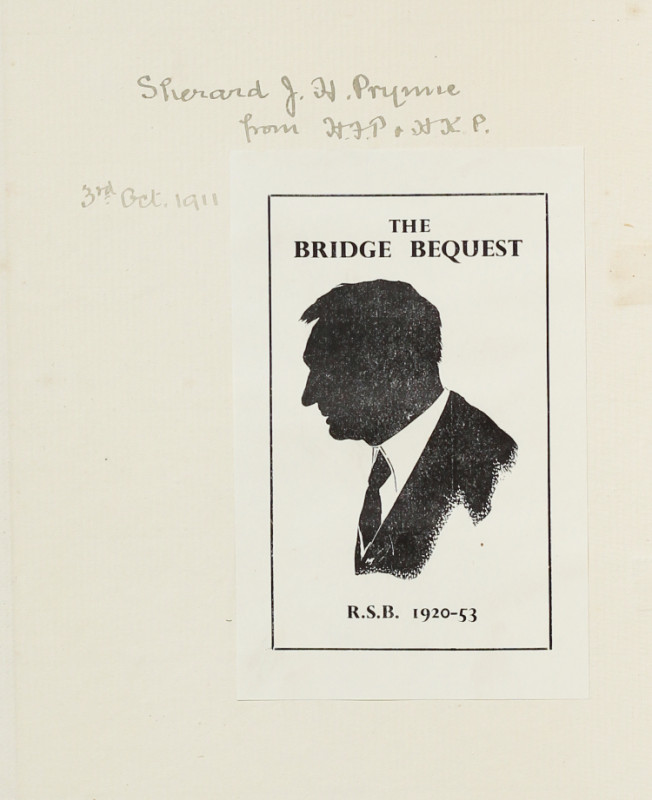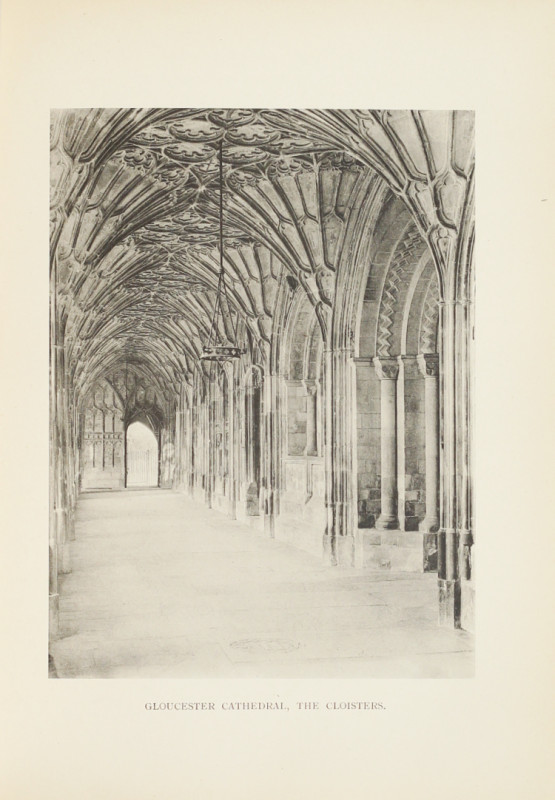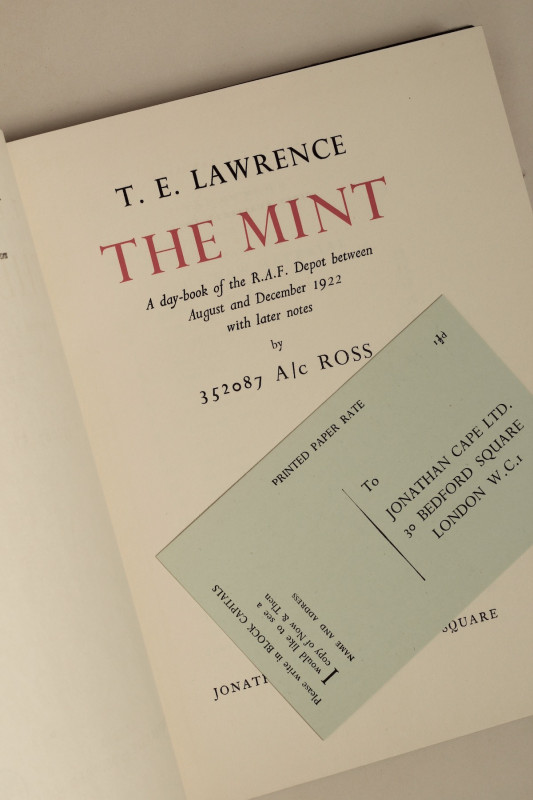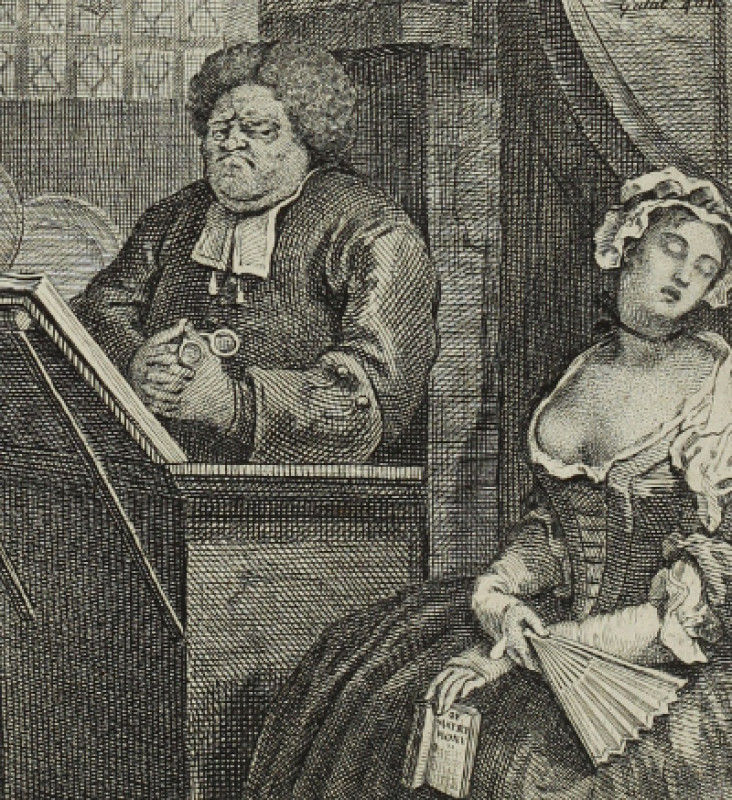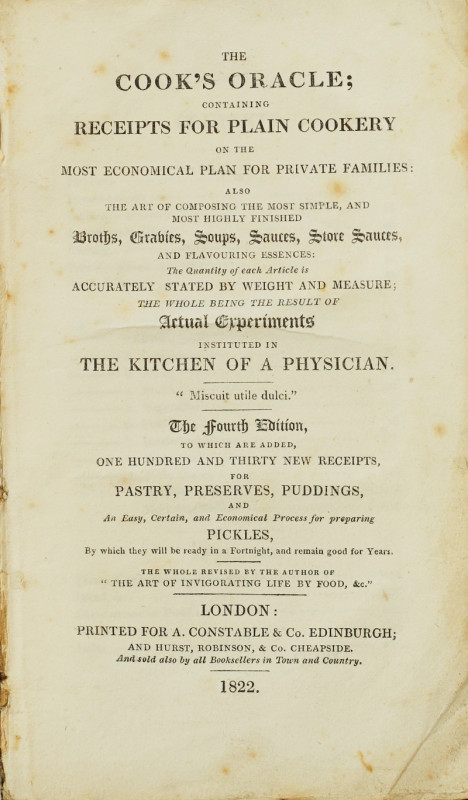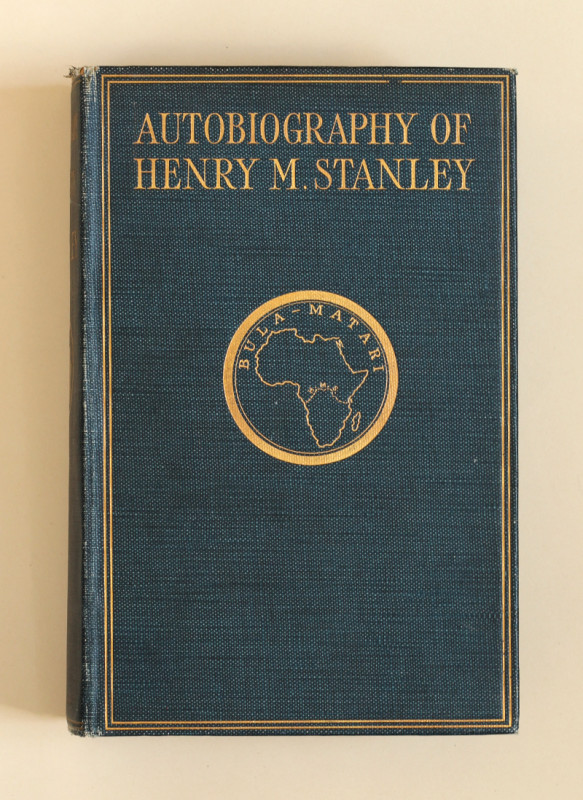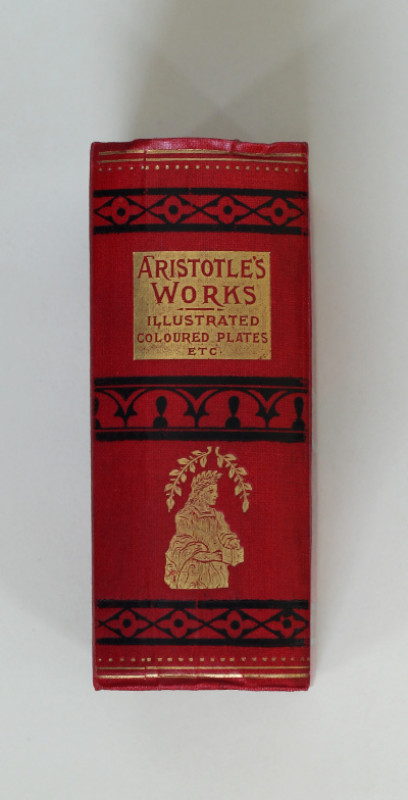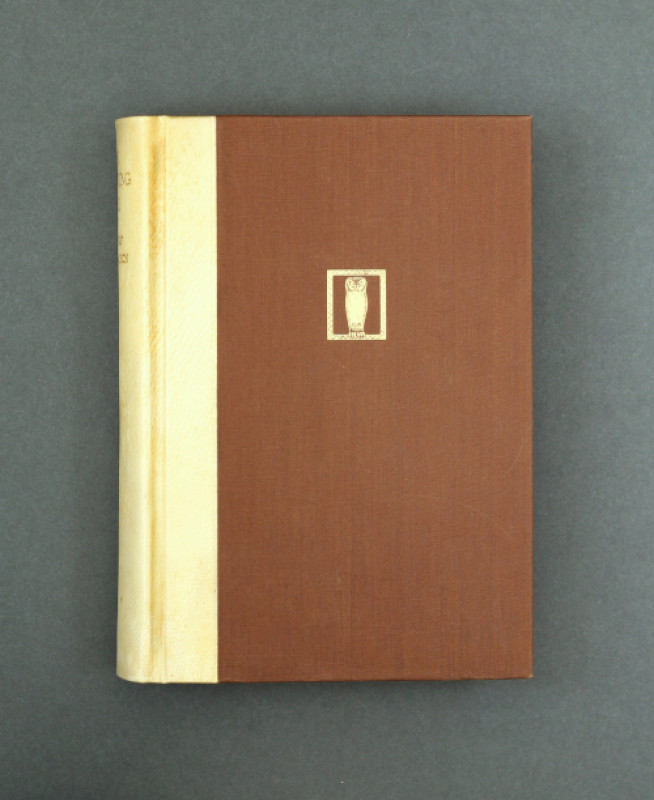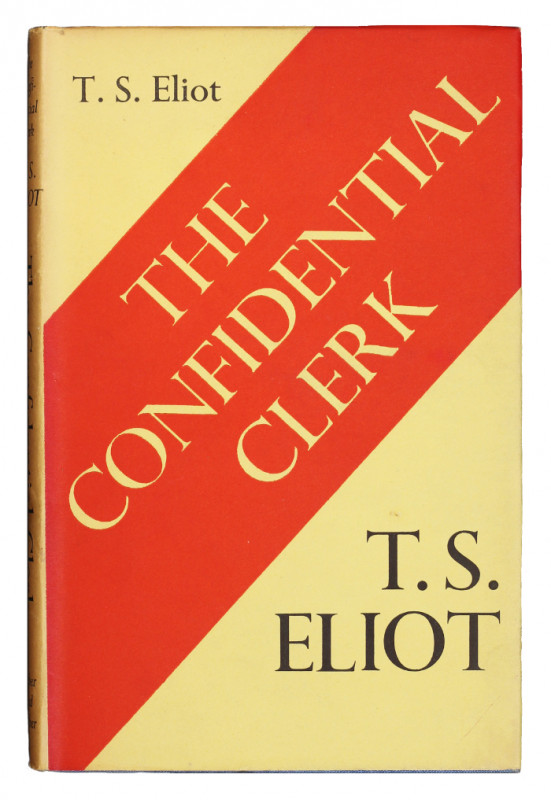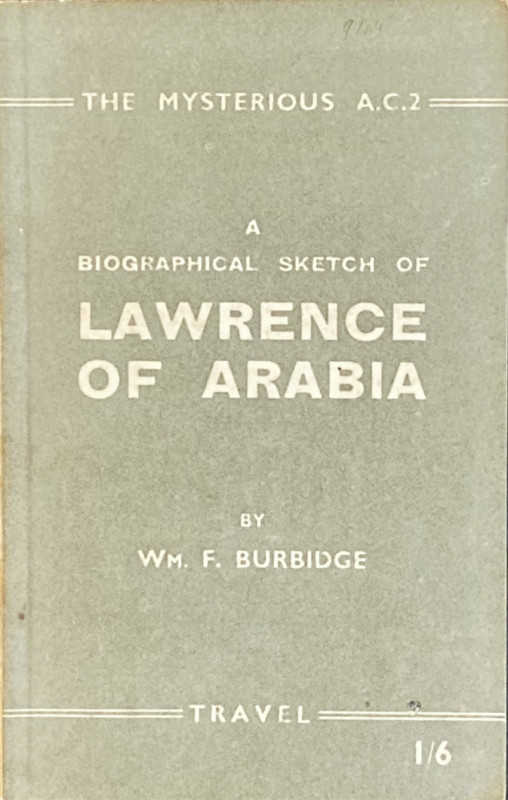Gothic Architecture in England...
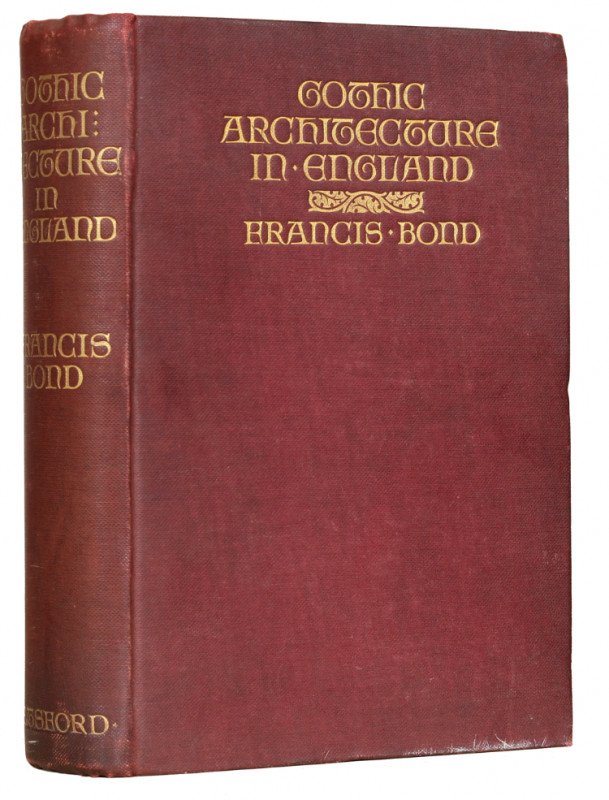

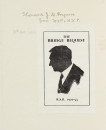

Book Description
BOND’S ‘VERY SERIOUS [...] WORK OF REFERENCE’, FROM THE LIBRARY OF AN ASSOCIATE OF THE ROYAL INSTITUTE OF BRITISH ARCHITECTS
¶¶
Full title: Gothic Architecture in England. An Analysis of the Origin & Development of English Church Architecture from the Norman Conquest to the Dissolution of the Monasteries
¶¶
Quarto (259 x 181mm), pp. [i]-xxii, 1-782, [1]-24 (publisher’s catalogue, printed on different paper stock). Letterpress ‘Errata et corrigenda’ slip tipped onto inner margin of p. [xvii]. Half-tone frontispiece, 19 monochrome plates, one double-page half-tone plate, and 18 half-tone plates integral to the text. Half-tone illustrations, diagrams, and plans in the text, some full-page. (A few light marginal marks, occasional light spotting, some minor marginal chipping.) Original maroon cloth gilt, upper board lettered and decorated in gilt, spine lettered in gilt, top edges gilt. (Light offsetting on endpapers, some light marking on fore-edges and boards, extremities slightly rubbed and bumped, cracking on upper hinge.) A very good copy.
¶¶
Provenance: Sherard John Howard Prynne ARIBA, 3 October 1911 (1889-1953, gift inscription ‘Sherard J.H. Prynne from H.F.P & H.K.P., 3rd Oct. 1911’ on upper pastedown) – Robert Sheldon Bridge (1882-1955, ownership signature on front free endpaper; [?]his pencilled notes on upper pastedown, and pp. 310, and 304; bequeathed to:) – Nottingham High School, Nottingham (‘The Bridge Bequest’ bookplate on upper pastedown; early armorial inkstamps on pp. [v] and 782; ink stamp with manuscript accession number and class mark on verso of title; sold on their behalf).
Dealer Notes
Second edition. The architectural historian Francis Bond (1852-1918) was educated at King Edward’s Grammar School, Louth and Lincoln College, Oxford. From 1893 until 1914 Bond was a lecturer, mainly on Gothic architecture, at the Oxford University Extension Delegacy, and published a number of works on early English ecclesiastical architecture, including English Cathedrals Illustrated (London, 1899), An Introduction to English Church Architecture from the 11th to the 16th Century (London, 1913), and ‘[h]is principal book was his monumental Gothic Architecture in England’ (D. Watkin, The Rise of Architectural History (London and Westfield, NJ, 1980), p. 109). ¶¶
Bond felt that ‘since the pioneering days of Britton, Pugin, Petit and Willis, the study of mediaeval architecture had atrophied. He also complained that it had especially suffered from the continuing application of Rickman’s, to him, false system of classification. His ambition was to make treatment of the subject more systematic and scientific in the sense of Viollet-le-Duc, and more evolutionary in the sense of Darwin. [...] For Bond there were no periods [of English mediaeval architecture] but a single organic development which should be studied as Darwin had studied the origin of species. Bond did not want stylistic analysis of successive periods but a comprehensive investigation of the whole of mediaeval architecture under the principal headings of (1) planning; (2) the vault and its abutments; (3) drainage; and (4) lighting. This, to do him credit, is what he achieved in his Gothic Architecture in England, and it makes a very serious [...] work of reference’ (op. cit., pp. 109-110). Although it is not identified as such, this copy is the second edition, which followed the first edition published by Batsford in 1905. ¶¶
This copy is from the library of Sherard J.H. Prynne, who was an Associate of the Royal Institute of British Architects, and was a gift from ‘H.F.P & H.K.P’; the first of these is likely to have been Sherard Prynne’s cousin Harold Fellowes Prynne ARIBA (1892-1984), who was the son of the architect George Halford Fellowes Prynne FRIBA (1853-1927; cf. A. Felstead, J. Franklin, and L. Pinfield, Directory of British Architects 1834-1900 (London, 1993), p. 743). It was later in the library of the schoolmaster R.S. Bridge, who was educated at Cheltenham College and Trinity College, Oxford, before embarking on a career as a schoolmaster at Bristol Grammar School as Senior Geography Master and at Nottingham High School as Senior History Master. Bridge, who bequeathed this and a number of other books to Nottingham High School, was also the author of The Geography of Commerce & Industry (London, 1920) and Man and Commerce (London, 1921). One of his former students, the novelist, playwright, and children’s writer Geoffrey Trease recalled Bridge as a teacher whose ‘method was in essence that of a university lecturer’, which ‘made it easy to like history’ (A Whiff of Burnt Boats (London, 1971), p. 47; Trease also dedicated his 1967 book The Grand Tour to the ‘memory of R.S. Bridge’). ¶¶
R.H. Kamen, British and Irish Architectural History: A Bibliography and Guide to Sources of Information, 754 (‘A very full treatise on the subject’). ¶¶
This book is available directly from our website (www.TypeAndForme.com). Alternatively, please contact us for any enquiries.
Bond felt that ‘since the pioneering days of Britton, Pugin, Petit and Willis, the study of mediaeval architecture had atrophied. He also complained that it had especially suffered from the continuing application of Rickman’s, to him, false system of classification. His ambition was to make treatment of the subject more systematic and scientific in the sense of Viollet-le-Duc, and more evolutionary in the sense of Darwin. [...] For Bond there were no periods [of English mediaeval architecture] but a single organic development which should be studied as Darwin had studied the origin of species. Bond did not want stylistic analysis of successive periods but a comprehensive investigation of the whole of mediaeval architecture under the principal headings of (1) planning; (2) the vault and its abutments; (3) drainage; and (4) lighting. This, to do him credit, is what he achieved in his Gothic Architecture in England, and it makes a very serious [...] work of reference’ (op. cit., pp. 109-110). Although it is not identified as such, this copy is the second edition, which followed the first edition published by Batsford in 1905. ¶¶
This copy is from the library of Sherard J.H. Prynne, who was an Associate of the Royal Institute of British Architects, and was a gift from ‘H.F.P & H.K.P’; the first of these is likely to have been Sherard Prynne’s cousin Harold Fellowes Prynne ARIBA (1892-1984), who was the son of the architect George Halford Fellowes Prynne FRIBA (1853-1927; cf. A. Felstead, J. Franklin, and L. Pinfield, Directory of British Architects 1834-1900 (London, 1993), p. 743). It was later in the library of the schoolmaster R.S. Bridge, who was educated at Cheltenham College and Trinity College, Oxford, before embarking on a career as a schoolmaster at Bristol Grammar School as Senior Geography Master and at Nottingham High School as Senior History Master. Bridge, who bequeathed this and a number of other books to Nottingham High School, was also the author of The Geography of Commerce & Industry (London, 1920) and Man and Commerce (London, 1921). One of his former students, the novelist, playwright, and children’s writer Geoffrey Trease recalled Bridge as a teacher whose ‘method was in essence that of a university lecturer’, which ‘made it easy to like history’ (A Whiff of Burnt Boats (London, 1971), p. 47; Trease also dedicated his 1967 book The Grand Tour to the ‘memory of R.S. Bridge’). ¶¶
R.H. Kamen, British and Irish Architectural History: A Bibliography and Guide to Sources of Information, 754 (‘A very full treatise on the subject’). ¶¶
This book is available directly from our website (www.TypeAndForme.com). Alternatively, please contact us for any enquiries.
Author
BOND, Francis
Date
1906
Publisher
London: The Darien Press for B.T. Batsford
Friends of the PBFA
For £10 get free entry to our fairs, updates from the PBFA and more.
Please email info@pbfa.org for more information
